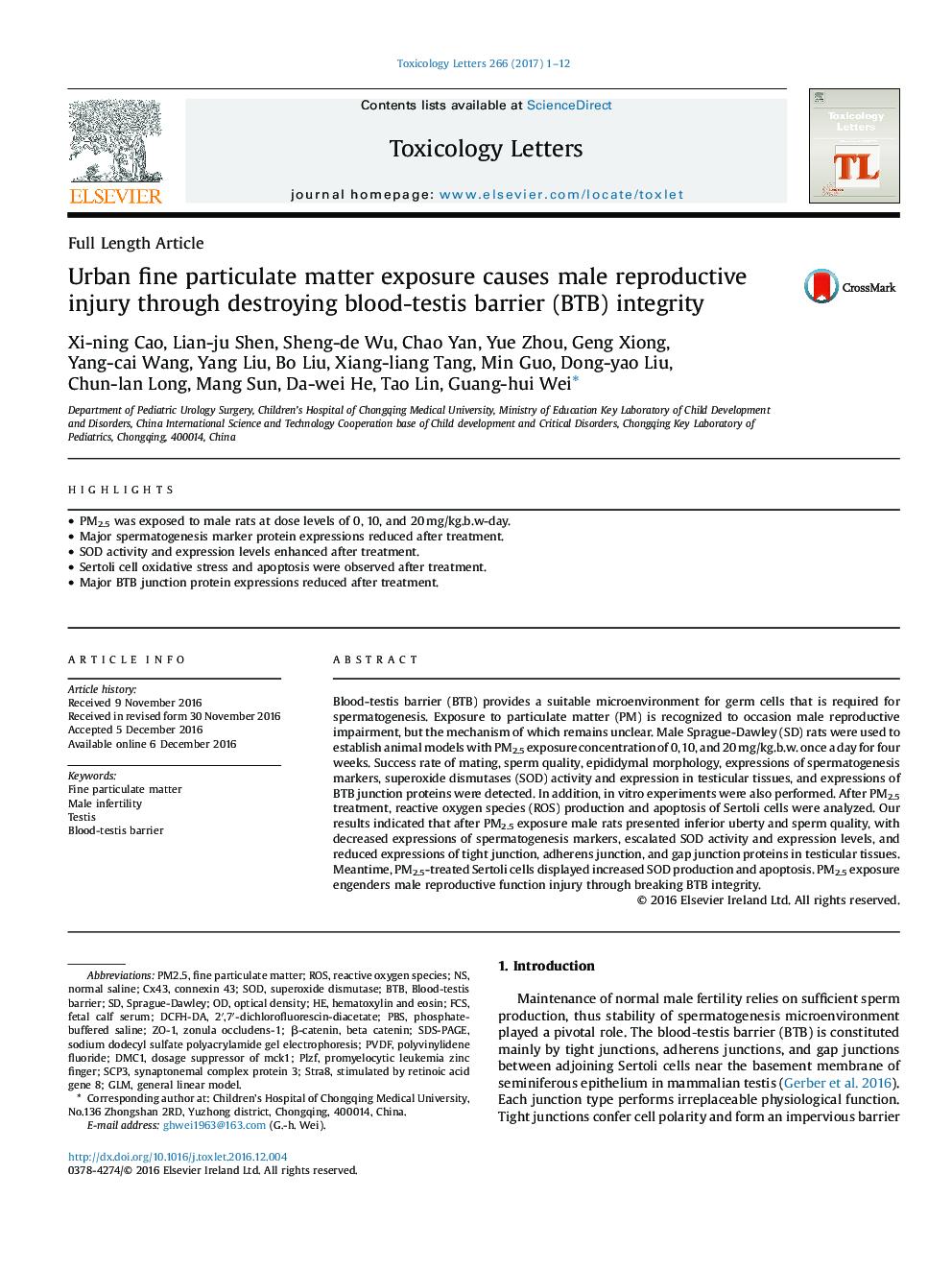| Article ID | Journal | Published Year | Pages | File Type |
|---|---|---|---|---|
| 5562196 | Toxicology Letters | 2017 | 12 Pages |
â¢PM2.5 was exposed to male rats at dose levels of 0, 10, and 20 mg/kg.b.w-day.â¢Major spermatogenesis marker protein expressions reduced after treatment.â¢SOD activity and expression levels enhanced after treatment.â¢Sertoli cell oxidative stress and apoptosis were observed after treatment.â¢Major BTB junction protein expressions reduced after treatment.
Blood-testis barrier (BTB) provides a suitable microenvironment for germ cells that is required for spermatogenesis. Exposure to particulate matter (PM) is recognized to occasion male reproductive impairment, but the mechanism of which remains unclear. Male Sprague-Dawley (SD) rats were used to establish animal models with PM2.5 exposure concentration of 0, 10, and 20Â mg/kg.b.w. once a day for four weeks. Success rate of mating, sperm quality, epididymal morphology, expressions of spermatogenesis markers, superoxide dismutases (SOD) activity and expression in testicular tissues, and expressions of BTB junction proteins were detected. In addition, in vitro experiments were also performed. After PM2.5 treatment, reactive oxygen species (ROS) production and apoptosis of Sertoli cells were analyzed. Our results indicated that after PM2.5 exposure male rats presented inferior uberty and sperm quality, with decreased expressions of spermatogenesis markers, escalated SOD activity and expression levels, and reduced expressions of tight junction, adherens junction, and gap junction proteins in testicular tissues. Meantime, PM2.5-treated Sertoli cells displayed increased SOD production and apoptosis. PM2.5 exposure engenders male reproductive function injury through breaking BTB integrity.
